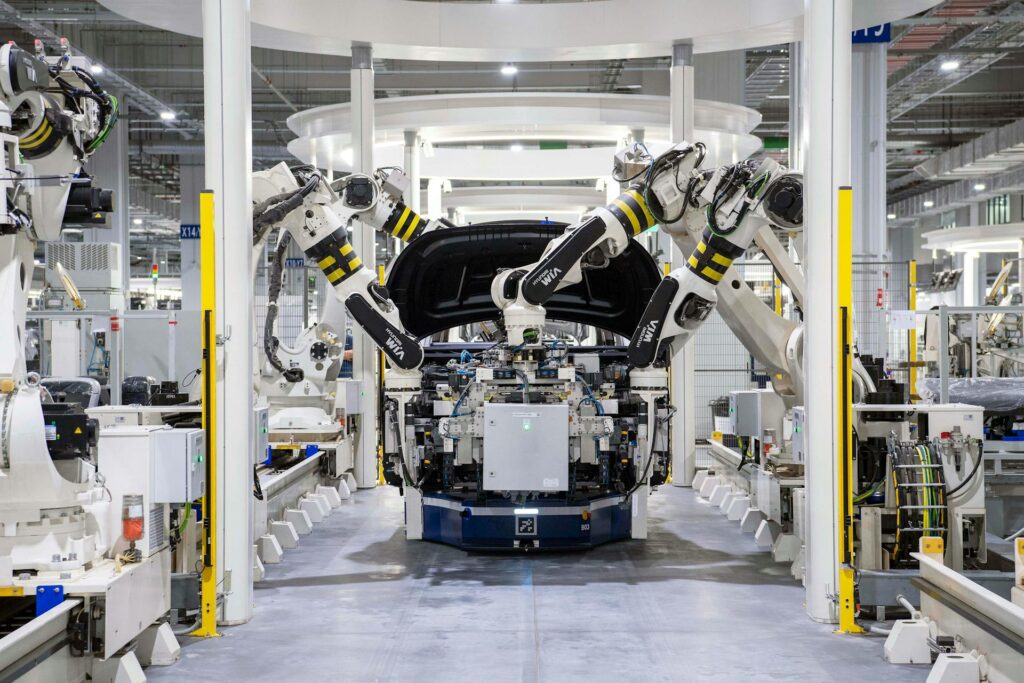Since the shutdown of global supply chains, companies have had to rethink their supply processes. However, even greater shocks, such as the on-off tariffs, have prompted CEOs to think more about resilience and not just recovery.
Resiliency in manufacturing refers to an organization’s ability to thrive in the face of disruptions. Let’s examine how smart manufacturing practices and business strategies can contribute to building resilience.
The Shift from Recovery to Resilience
The COVID-19 pandemic was a wake-up call, exposing the fragility of supply chains like never before. Back then, manufacturers leaned hard into consolidation to cut costs. Efficiency was king. Manufacturing risk management? Barely a footnote. Many, like Apple, woke up to find critical assets bottlenecked in one or two plants worldwide, leaving them vulnerable when disruptions hit.
Fast forward to today, and the landscape has only grown messier. Sky-high tariffs, AI disruptions, geopolitical tensions, never-ending cyberattacks, record-breaking natural disasters, and protests grinding operations to a halt are forcing a rethink. One thing is clear: recovery isn’t enough. Resilient business strategies are essential for maintaining steady operations, regardless of what comes next.
Key Investments in Smart Manufacturing
AI is transforming manufacturing—81% of executives plan to increase their investments in AI over the next three years, aiming for intelligent systems to drive competitiveness.
Industry 4.0 focused on utilizing robotics, AI, and IoT to drive digital transformation in manufacturing, whereas Industry 5.0 emphasizes the integration of humans, AI, and machine learning (ML) to enhance productivity. AI systems will analyze real-time production data to spot inefficiencies and predict equipment failures, while ML will optimize processes by adapting to demand or material changes.
The adoption of 5G enables edge computing for instant decision-making and enhances Industrial IoT (IIoT) networks to connect machinery, sensors, and workers for greater control. About 72% of manufacturers in North America have adopted IoT smart systems.
Digital threads will provide visibility into the entire manufacturing chain, allowing management to gauge performance, inventory, and supply chains, while ensuring quality and minimizing downtime.
Digital twins are virtual replicas of assets that allow manufacturers to simulate scenarios, test configurations, and accelerate product development. It is expected to become an industry standard by 2026.
Developing Resilient Business Strategy
With the fragility of global supply chains exposed, 68% of U.S. and European companies decided to reshore or diversify suppliers.
Climate change drives green manufacturing, which integrates sustainable manufacturing practices across production to reduce waste and conserve resources. Green manufacturing also lowers costs while supporting a circular economy.
The ESG framework is similar but extends beyond environmental concerns, emphasizing fair labor, diversity, ethical sourcing (social), and transparent governance.
Rather than AI-driven job losses, 94% of leaders are reskilling workforces to boost AI fluency to facilitate advanced manufacturing technologies.
The convergence of information technology (IT) and operational technology (OT) boosts operational efficiency in manufacturing, but introduces cyber risks. Manufacturers are adopting layered cybersecurity, establishing governance for safety and compliance, and encouraging collaboration between IT and OT security teams for a more robust defense.
Case Studies of Manufacturing Leaders
Here’s a detailed look at how leading manufacturing companies are handling resilience:
GE Aerospace
The company is enhancing supply chain resilience with nearly $1 billion in investment in U.S. factories and suppliers. Its investment includes hiring 5,000 U.S. workers to boost capacity. GE Aerospace also intends to rely on manufacturing innovation strategies, such as 3D printing components, to reduce costs.
Caterpillar Inc.
At the heart of Caterpillar’s resiliency plans is bolstering manufacturing resilience to move production to North America (spending over $800 million) and Southeast Asia. They aim to mitigate supply chain risks and capitalize on regional demand. Caterpillar is also involved in integrating AI and IoT to create digital threads that enhance efficiency.
Future Outlook: Manufacturing in 2026 and Beyond
Manufacturing leadership must increasingly expand its risk zones and plan for blind spots. Manufacturers will increasingly rely on AI and data analytics for informed data-driven decisions and predictions.
In 2026, there will be a greater emphasis on building resilient supply chains through diversified sourcing and local production. More companies will push to reshore parts of their production.
Additive manufacturing, such as 3D printing, will continue to expand. 2026 will be the year of greater industrial automation trends, with AI and human-machine collaboration becoming more evident, supported by significant efforts in manufacturing workforce development.
Explore these manufacturing resources and contact MRINetwork to discuss talent solutions.

Connect with MRINetwork